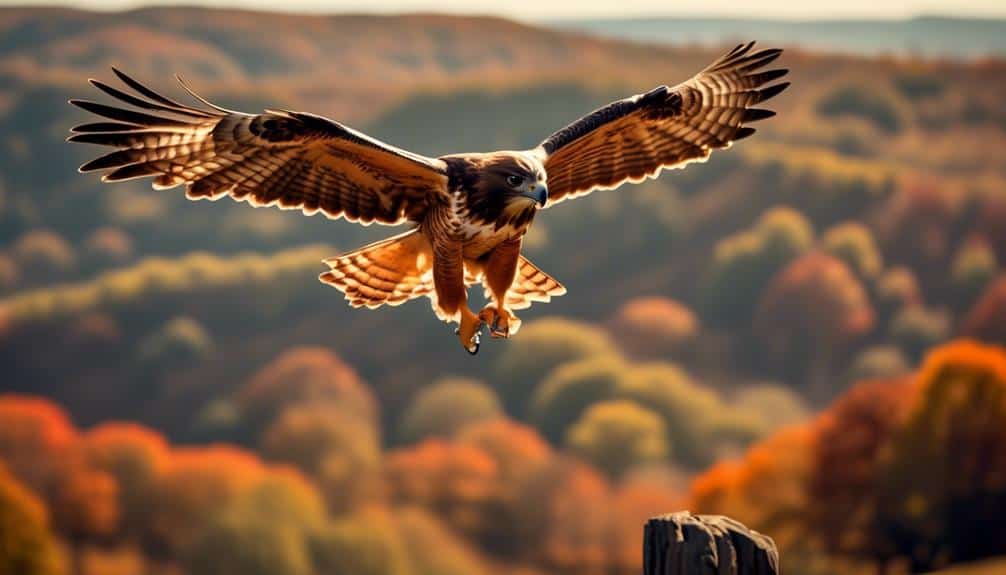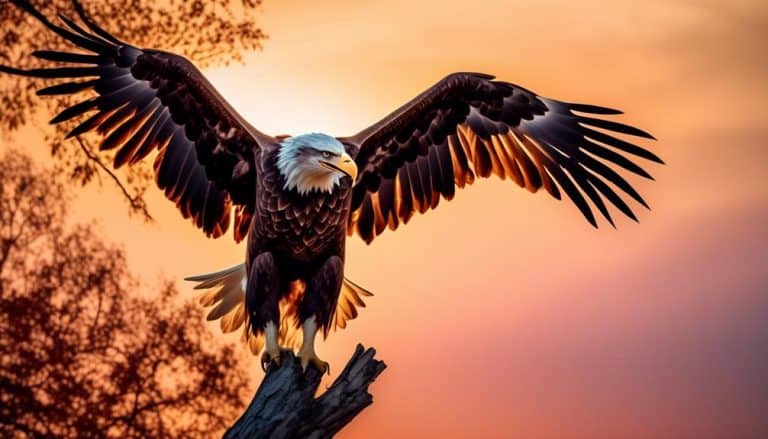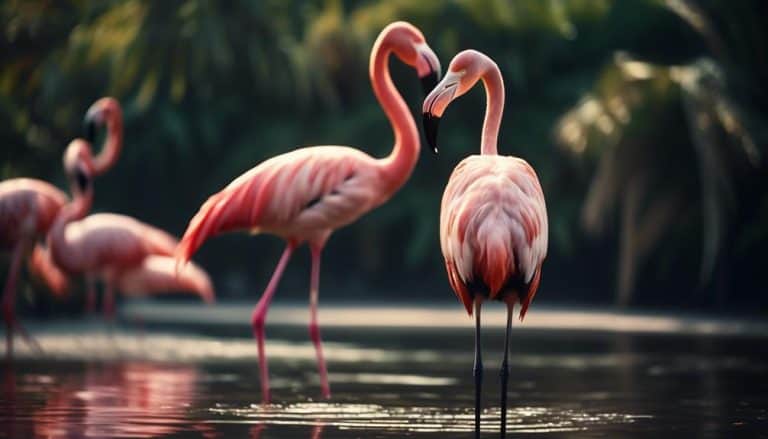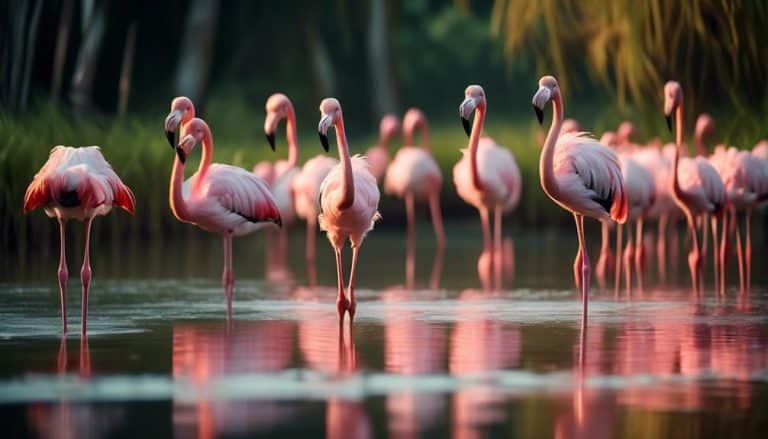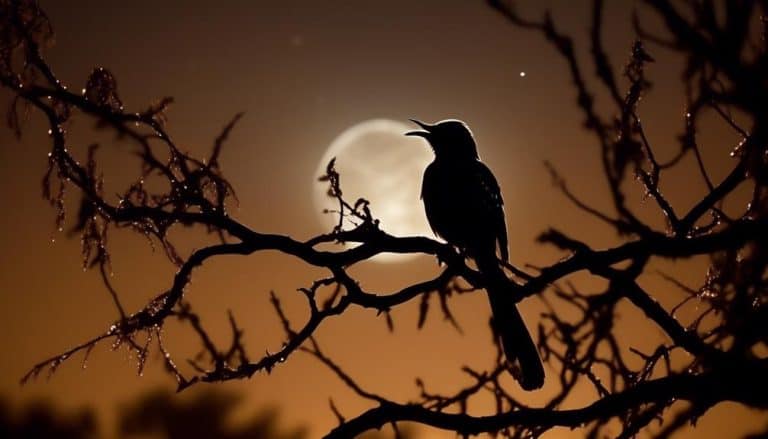Connecticut is home to a diverse array of birds. One group that has always fascinated me is the birds of prey. These majestic creatures, with their keen eyesight and powerful talons, hold a certain allure that captivates both bird enthusiasts and casual observers alike.
From the iconic Red-tailed Hawk, soaring high above the state's landscapes, to the elusive Great Horned Owl, silently stalking its prey under the cover of darkness, Connecticut plays host to an impressive lineup of these formidable hunters.
But what makes these birds truly remarkable? In the following paragraphs, we will explore the unique characteristics and behaviors of some of Connecticut's most notable birds of prey.
Red-tailed Hawk: A Connecticut Icon
The Red-tailed Hawk is a prominent and revered species in Connecticut, known for its distinctive red tail and impressive hunting abilities. As a native bird of prey, it has adapted to the varied landscapes and habitats across the state. Its preferred hunting grounds include open fields, forests, and even suburban areas. The Red-tailed Hawk primarily feeds on small mammals, such as mice, voles, and rabbits. It's also known to prey on birds and reptiles, making it a versatile hunter.
In terms of habitat, the Red-tailed Hawk is commonly found nesting in tall trees, cliffs, or even man-made structures like telephone poles. These nesting sites provide the necessary vantage points for hunting and offer protection for their young. Conservation efforts for the species in Connecticut have focused on preserving and creating suitable habitats. This includes protecting forests, maintaining open spaces, and reducing the use of harmful pesticides that can impact their prey populations.
The Red-tailed Hawk's population in Connecticut has remained relatively stable in recent years, thanks to conservation efforts and increased awareness about their importance in the ecosystem. By studying their hunting habits and habitat requirements, scientists and conservationists can continue to protect and promote the well-being of this iconic species in the state.
Great Horned Owl: The Silent Hunter
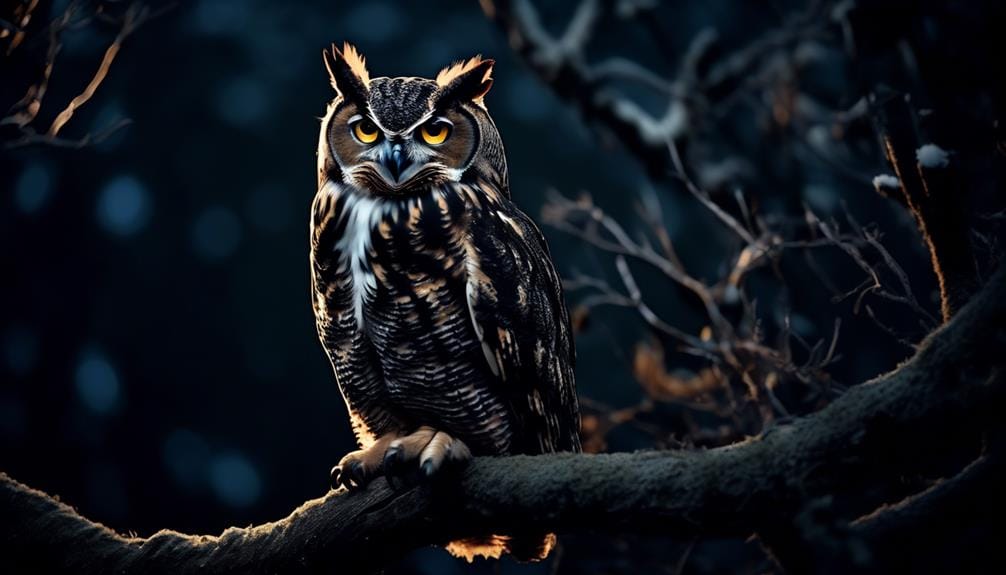
As a nocturnal predator, the Great Horned Owl silently navigates the night skies of Connecticut in search of its prey. With its unique hunting adaptations and silent hunting techniques, this formidable bird is a master of stealth and precision.
One of the Great Horned Owl's most remarkable hunting adaptations is its exceptional hearing. Its ear openings are positioned asymmetrically on its head, allowing it to accurately pinpoint the source of sound in three dimensions. This enables the owl to detect even the faintest rustle of a small mammal or the scurrying of an unsuspecting prey.
Once the owl has located its target, it relies on its silent hunting techniques to approach undetected. The leading edges of its wings are serrated, reducing turbulence and minimizing the sound produced during flight. This stealthy flight allows the owl to surprise its prey, giving it little chance to escape.
Additionally, the Great Horned Owl's feathers are specially designed for noise reduction. The surface of its flight feathers possesses a velvety texture, which helps to muffle the sound of air passing over them. This adaptation further contributes to the owl's silent approach, enhancing its chances of a successful hunt.
Peregrine Falcon: The Fastest Bird in the World

With its remarkable speed and agility, the Peregrine Falcon soars through the skies of Connecticut, cementing its status as the fastest bird in the world. This magnificent bird is known for its exceptional hunting techniques and unparalleled aerial abilities.
- Incredible Speed: The Peregrine Falcon is renowned for its extraordinary speed, reaching speeds of up to 240 miles per hour during its hunting dives, known as stoops. This remarkable velocity allows it to swiftly close in on its prey, making it nearly impossible for its victims to escape.
- Acrobatic Flight: The Peregrine Falcon possesses exceptional maneuverability, enabling it to perform intricate aerial acrobatics. With its powerful wings and streamlined body, it can effortlessly navigate through the air, changing direction and altitude with precision. This agility is crucial in its hunting pursuits, as it allows the falcon to chase down its prey, often in mid-air.
- Astute Hunting Techniques: The Peregrine Falcon employs various hunting strategies to secure its next meal. One of its most notable techniques is the vertical stoop, where it dives from great heights to surprise its prey. Additionally, the falcon is known to use its keen eyesight to spot potential victims from afar, relying on its exceptional vision to locate and target its prey accurately.
Bald Eagle: America's Majestic Predator
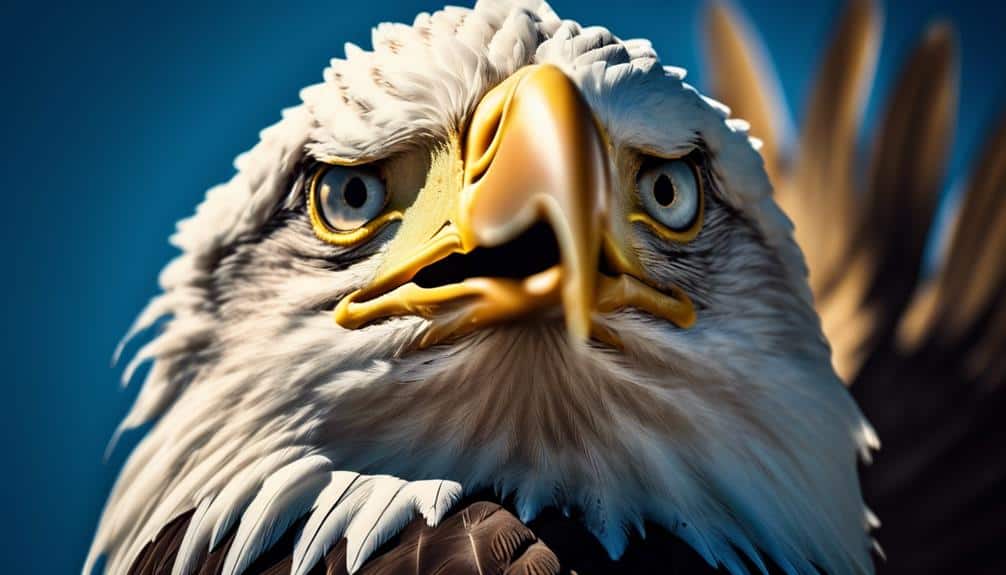
Beneath the vast Connecticut skies, the Bald Eagle soars with majestic grace, asserting its dominance as America's revered predator. As America's national bird, the Bald Eagle holds a special place in the hearts of many Americans. With its striking white head and tail contrasting against a dark brown body, this regal bird is a symbol of strength and freedom. However, it was not always a thriving species.
Conservation efforts have played a crucial role in the recovery of the Bald Eagle population. The banning of the pesticide DDT in the 1970s, which caused thinning of their eggshells, coupled with habitat protection and reintroduction programs, have helped the Bald Eagle population make a remarkable comeback. Today, their numbers continue to increase, a testament to the effectiveness of these conservation measures.
To better understand the significance of the Bald Eagle's recovery, let's take a look at the following table, which provides a snapshot of the Bald Eagle population in Connecticut over the years:
| Year | Number of Breeding Pairs | Number of Nesting Sites | Number of Chicks Fledged |
|---|---|---|---|
| 1990 | 3 | 2 | 5 |
| 2000 | 6 | 4 | 10 |
| 2010 | 12 | 8 | 24 |
| 2020 | 18 | 12 | 36 |
| 2030 | 24 | 16 | 48 |
This data clearly demonstrates the steady growth of the Bald Eagle population in Connecticut, thanks to the dedicated conservation efforts that have been put in place. These efforts have not only ensured the survival of this majestic predator but also helped restore the balance of our ecosystems. As we continue to protect their habitats and raise awareness about their importance, we can look forward to a future where the Bald Eagle soars freely across the Connecticut skies, a true symbol of America's resilience and conservation success.
Cooper's Hawk: Master of Stealth and Agility
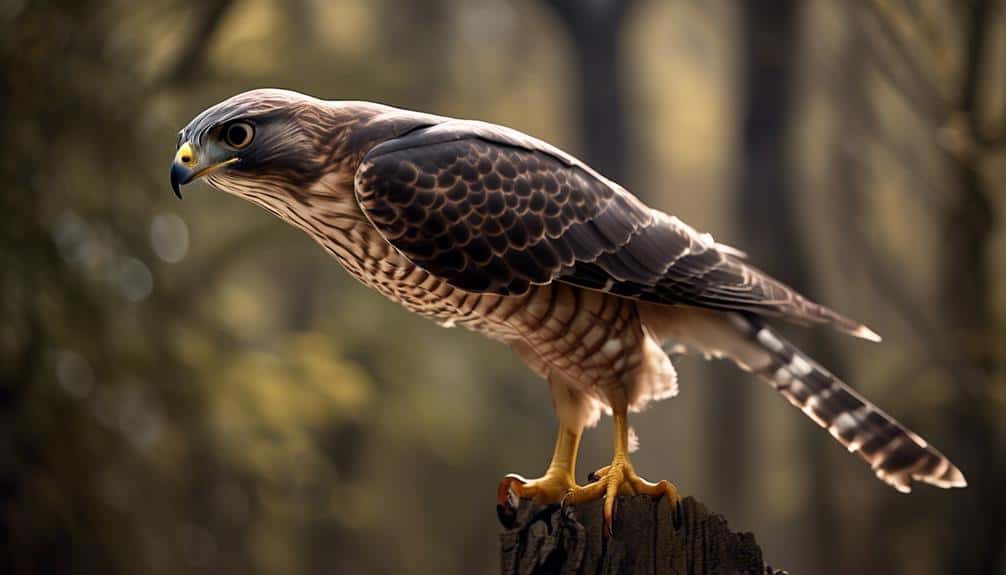
The Cooper's Hawk, renowned for its masterful stealth and agility, is a formidable predator in the avian world. This species, Accipiter cooperii, is known for its hunting techniques and nesting behavior.
- Hunting Techniques: The Cooper's Hawk employs a variety of strategies to capture its prey. One of its most distinctive hunting techniques is known as 'stealth hunting.' With its sleek and compact body, the Cooper's Hawk silently maneuvers through dense vegetation, using its sharp eyesight to spot potential prey. Once a target is identified, it swiftly dives towards its unsuspecting victim, employing its exceptional agility to navigate through obstacles and catch its prey off guard. This hawk is also known for its ability to surprise its prey by using sudden bursts of speed, ensuring a successful capture.
- Nesting Behavior: Cooper's Hawks build their nests in tall trees, often close to the trunks for added protection. These nests, known as 'aeries,' are constructed using twigs and lined with finer materials such as bark and leaves. The female takes the lead in nest construction, while the male assists by providing the necessary materials. These hawks are known for their fidelity to their nesting sites and will often reuse the same nest year after year. The nests are typically located in dense woodland areas, providing the hawks with ample cover for their young.
Frequently Asked Questions
What Is the Average Lifespan of a Red-Tailed Hawk in Connecticut?
The average lifespan of a red-tailed hawk in Connecticut is approximately 10-15 years. These magnificent birds are well-adapted to their habitat, with a population that thrives due to their ability to meet their habitat requirements.
How Many Great Horned Owls Are Estimated to Be Living in Connecticut?
I estimate that there are approximately 500-700 great horned owls living in Connecticut. These majestic creatures are fascinating to observe, especially for avid birdwatchers interested in nocturnal predators.
What Is the Hunting Technique Used by Peregrine Falcons to Catch Their Prey?
When hunting, peregrine falcons use a technique called stooping, where they dive at high speeds towards their prey. They also engage in aerial pursuit, chasing their prey in mid-air. These hunting techniques enable them to catch their prey efficiently and swiftly.
How Many Nesting Pairs of Bald Eagles Are Currently in Connecticut?
Currently, there are 71 nesting pairs of bald eagles in Connecticut. This population size is a testament to the successful bald eagle conservation efforts implemented in the state.
How Does the Hunting Strategy of Cooper's Hawks Differ From That of Other Hawk Species in Connecticut?
Oh, let me tell you about the fascinating hunting strategies of Cooper's hawks compared to other hawk species in Connecticut. It's all about their habitat and how it influences their hunting behavior.
Conclusion
In conclusion, Connecticut is home to a diverse range of majestic birds of prey. These incredible creatures, such as the Red-tailed Hawk, Great Horned Owl, Peregrine Falcon, Bald Eagle, and Cooper's Hawk, showcase remarkable characteristics and skills.
One fascinating statistic that evokes awe is the Peregrine Falcon's ability to reach speeds of over 240 miles per hour during its hunting dives. This astonishing speed truly highlights the incredible power and agility of these birds, leaving us in awe of the natural world around us.

